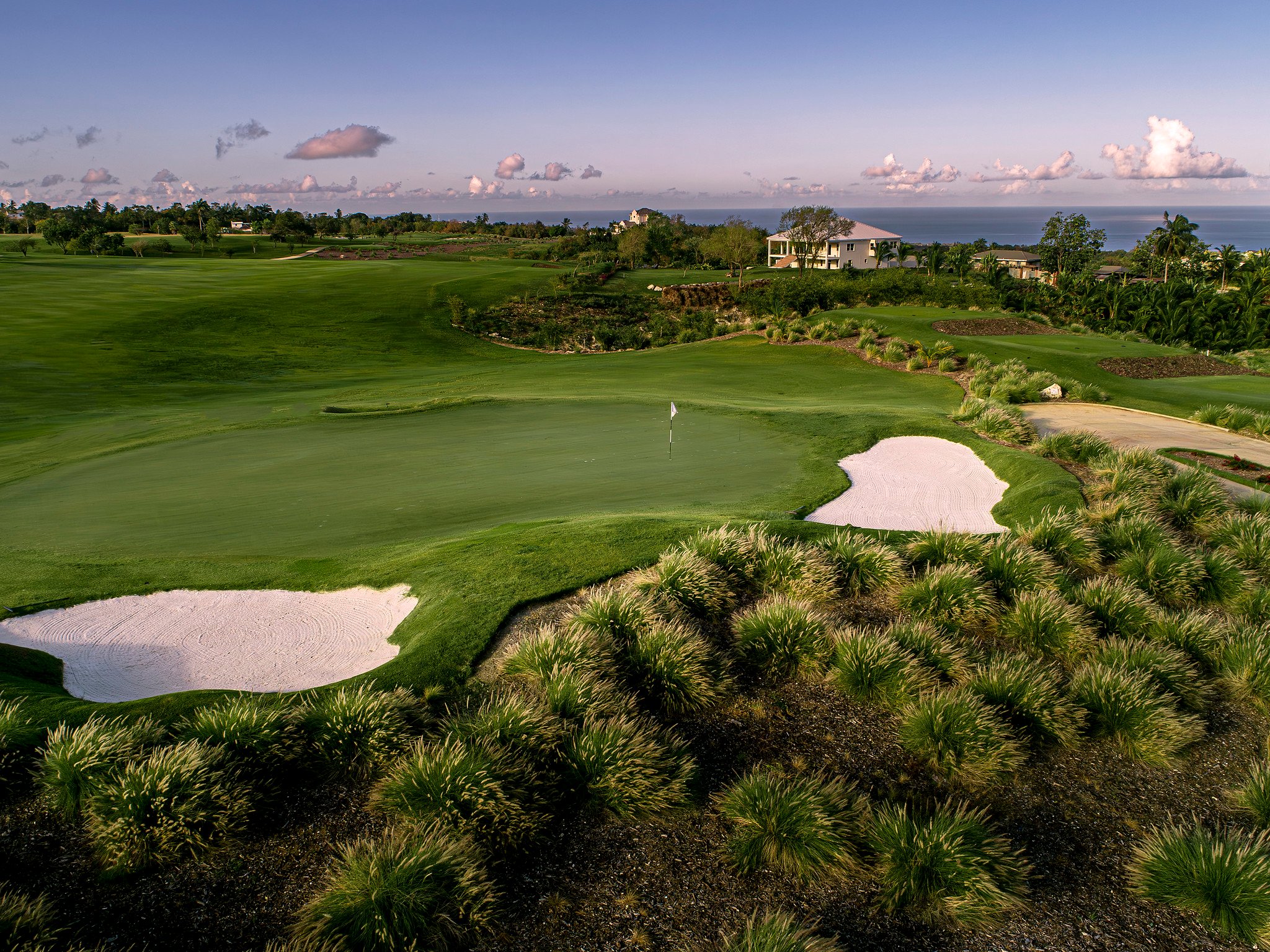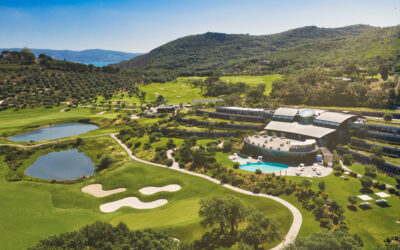A Northern Gem of a Course
Castle Stuart Golf Links has only been in existence for 13 years but has made an indelible mark on all those who have played it. Such is the quality of its design, Castle Stuart played host to the European Tour’s Scottish Open four times in six years from 2011 to 2016.
The course opened in 2009 and was designed by two Americans, co-owner Mark Parsinen and course architect, Gil Hanse. It was their goal to build a course that would add something else to the historical links courses of the Scottish Highlands. They certainly achieved that.
Castle Stuart is located about 6 miles northeast of the city of Inverness, regarded as the capital of the Scottish Highlands. There is an actual castle, well a tower house on the land and it dates back to the 16th century. It sits directly behind the 4th green and provided the inspiration for the Castle Stuart logo. The Clubhouse is built in an art deco style, similar, in many ways to parts of the clubhouse at Royal Birkdale.
Pre round Practice
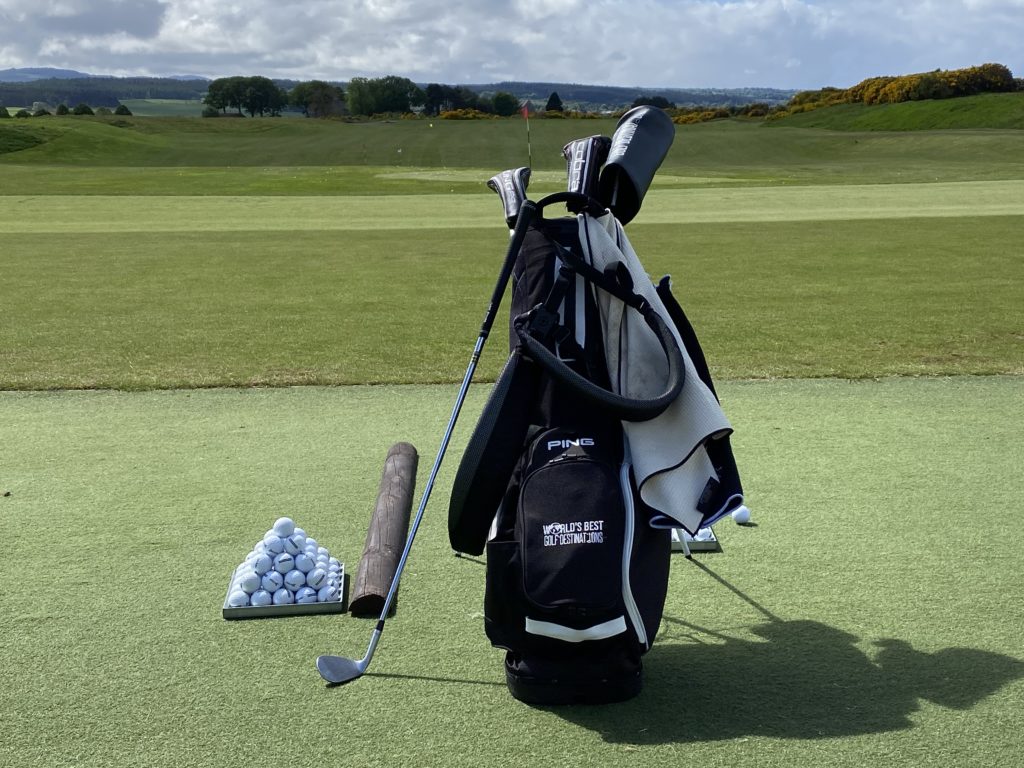 WBGD on the range
WBGD on the range
The practice facilities at Castle Stuart are excellent with a full-sized range and short game area and an enormous putting green in front of the clubhouse. It was our first visit to Castle Stuart. When you play links golf in Scotland, you are looking for one of two things to enhance your visit. You hope for either a flat calm sunny day so that you can score well, or you hope for a bright, breezy day where your score doesn’t matter and it’s you against the elements. We got the latter and some would say, the true Scottish links experience, minus the rain.
The Front Nine
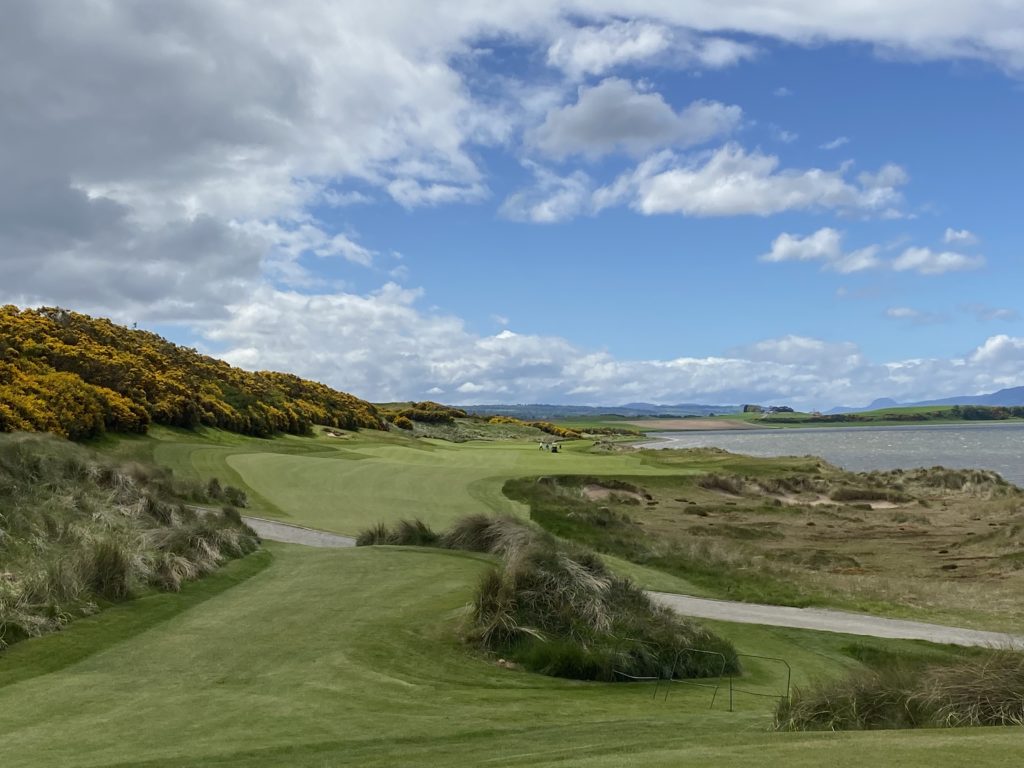 View from the first tee
View from the first tee
The opening hole at Castle Stuart is a beauty. At just under 400 yards from the white tees, it should be a gentle introduction to the links. A bank of yellow gorse on the left of the fairway and the Moray Firth on the right beautifully frames the opening tee shot. However, when it’s into a 25 mph wind, it’s a formidable start. A decent driver off the tee, followed by a well-struck 3 wood left me 20 yards short!! A bump and run and a two putt and I was happy with a bogey to start. It could have been much worse.
The second hole, a 530-yard par 5, also played directly into the wind and for me wasn’t even reachable in 3. Driver, 3 wood, 3 wood and we were in the left bunker, just short. A hack out and two putts meant an easy six and a bogey, bogey start. We were discovering that playing in the wind is tough and yardages mean nothing!!
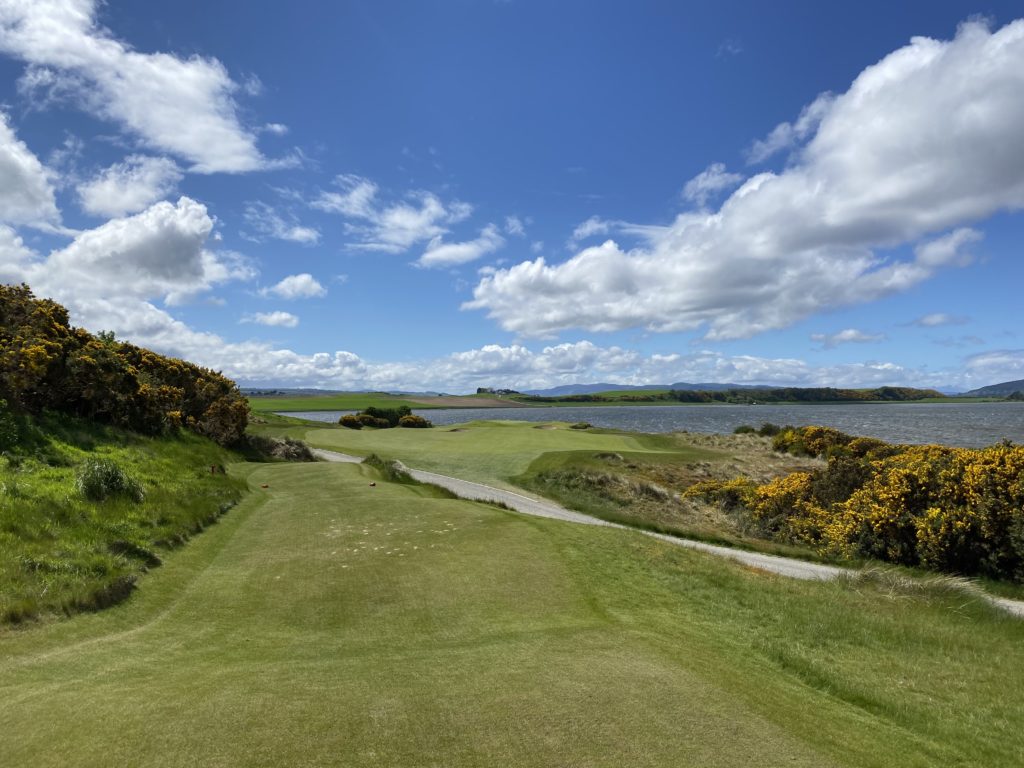 The 3rd hole
The 3rd hole
Pars at Last!
The third hole, a short par 4, would normally be a birdie chance, however, the wind made judging the approach shot tricky as the green is narrow with run-off areas left, right and short. It would be our first par and it felt like a small victory on a day of golfing attrition.
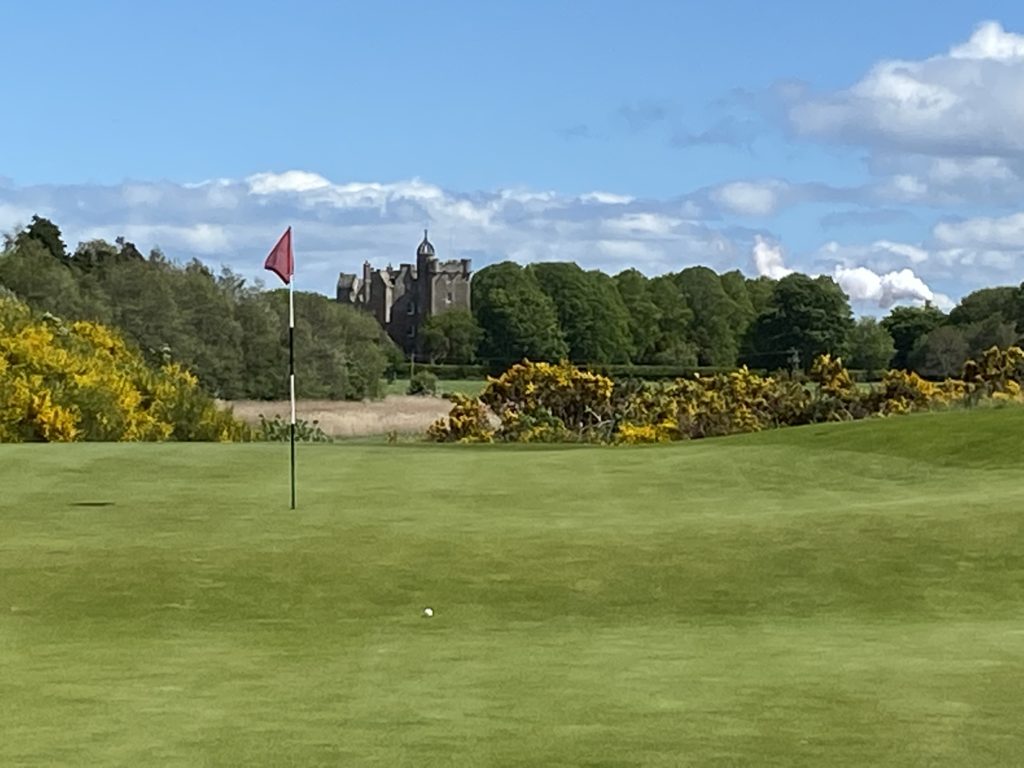 The 4th green with the tower house in the background.
The 4th green with the tower house in the background.
The 4th is the first par 3 on the course and was a welcome respite from the elements. For a right-handed player, the right to left wind is easier to play in and it was the case for me on this hole. The hole was playing 176 yards and a well-struck 6 iron left me with a 20-foot putt up the tier. Two pars in a row.
The 5th and 6th, a par 4 and a par 5, which go in opposite directions, were both playing with the wind across. Neither hole played straightforward. The 5th is a 430-yard par 4 where you must avoid the fairway bunkers and the gorse down the right. The 6th is a par 5 of almost 530 yards. It’s a relatively straightforward hole if you play it as a 3 shotter. Lay up short of the bunker in the middle of the fairway on your second shot to leave a simple pitch to the green.
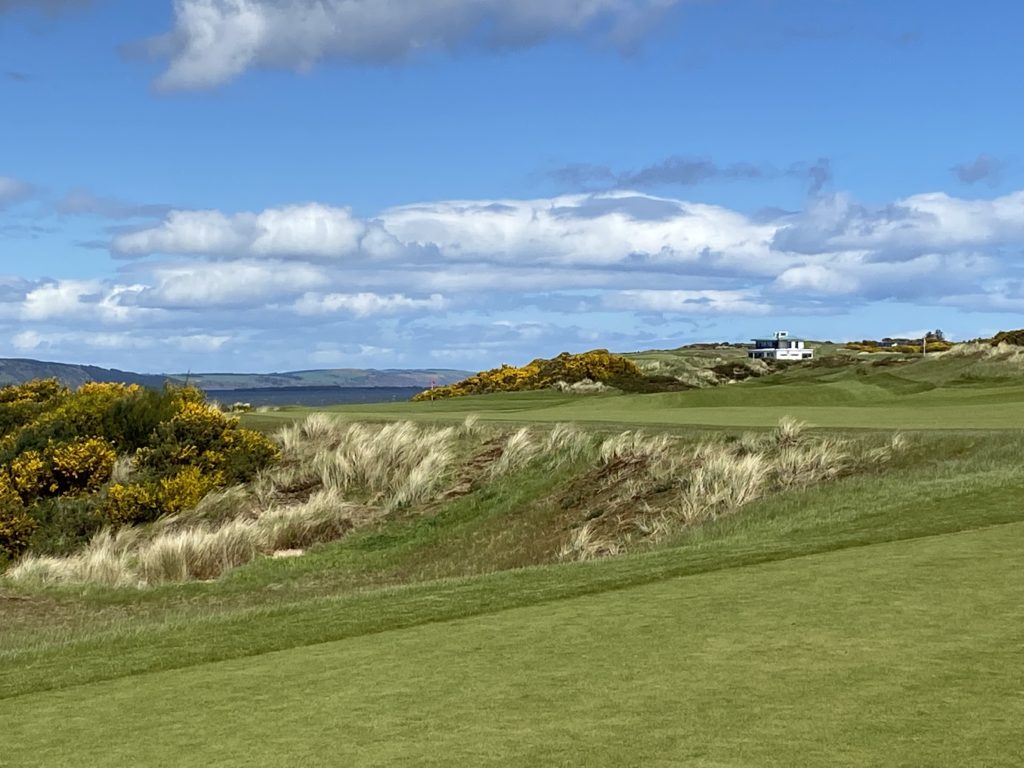 Your second shot at the 7th
Your second shot at the 7th
The 7th hole is a cracking hole. It plays like a dogleg and the green looks like it’s sitting at the top of a cliff. A strong par 4 at 450 yards, being on the left side of the fairway gives you the best angle to the green. The green is enormous at 46 yards long so being pin high is preferential for an easy two putt.
The Downwind Holes
The 8th and 9th holes were the first holes to play downwind which was a welcome relief. The 8th is a 200-yard par 3 which plays downhill to a large punchbowl green. Again, being pin high, in the right part of the green means you can two putt. However, there are some parts of this green from which three and four putting are a distinct possibility.
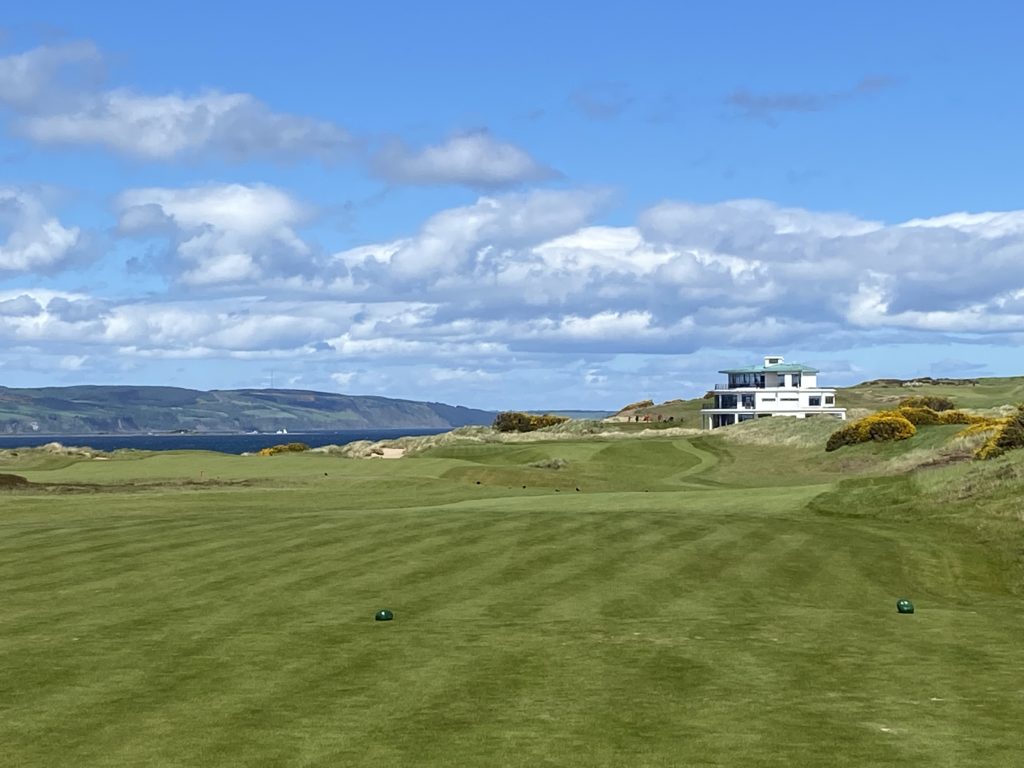 The 9th hole
The 9th hole
The 9th is a shortish par 4 at 350 yards and for some, a great risk and reward hole. As it was playing directly downwind, we thought that we would have a go. The ideal line is just left of the clubhouse as there is a gully if you go further left. Our tee shot finished on the upslope about 30 yards short of the green. A pitch to 10 feet and a single putt gave us the first birdie of the day and it was a great end to a fantastic front nine holes
The Halfway Point
On the way to the tenth tee, we stopped at the halfway house for a coffee. The starter asked how our round was going and when we said that it was tough in this wind, he said that this was only a good breeze and not really a wind!!
The back nine starts with a short par 4 which runs right along the Moray Firth which is now on your left. Playing downwind, it was a 3 wood off the tee followed by a wedge into a long narrow green which is next to the water’s edge.
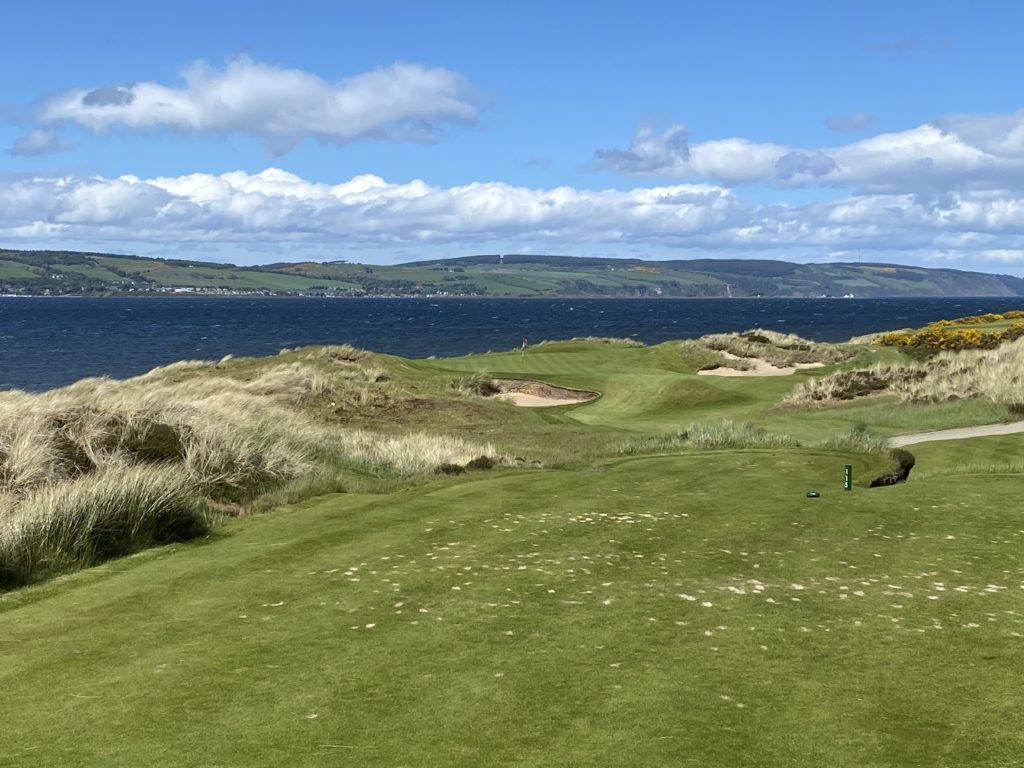 The 11th hole
The 11th hole
The short 11th is a picturesque par 3. At only 130 yards, it’s a potential birdie hole although looks can be deceiving. The green is 44 yards long so finishing pin high is not as easy as you first think. Par 3’s don’t have to be long to be challenging!!
The 12th is an uphill par 5 of 520 yards and was the last hole that was next to the water. A decent drive leaves you with a choice of whether to go for the green or layup. Going for the green is tough with bushes on the left, a bunker to carry and the only bailout is up the right. The long green is surrounded by gorse bushes so it’s better to layup and wedge in from around 100 yards out.
Taking the High Ground
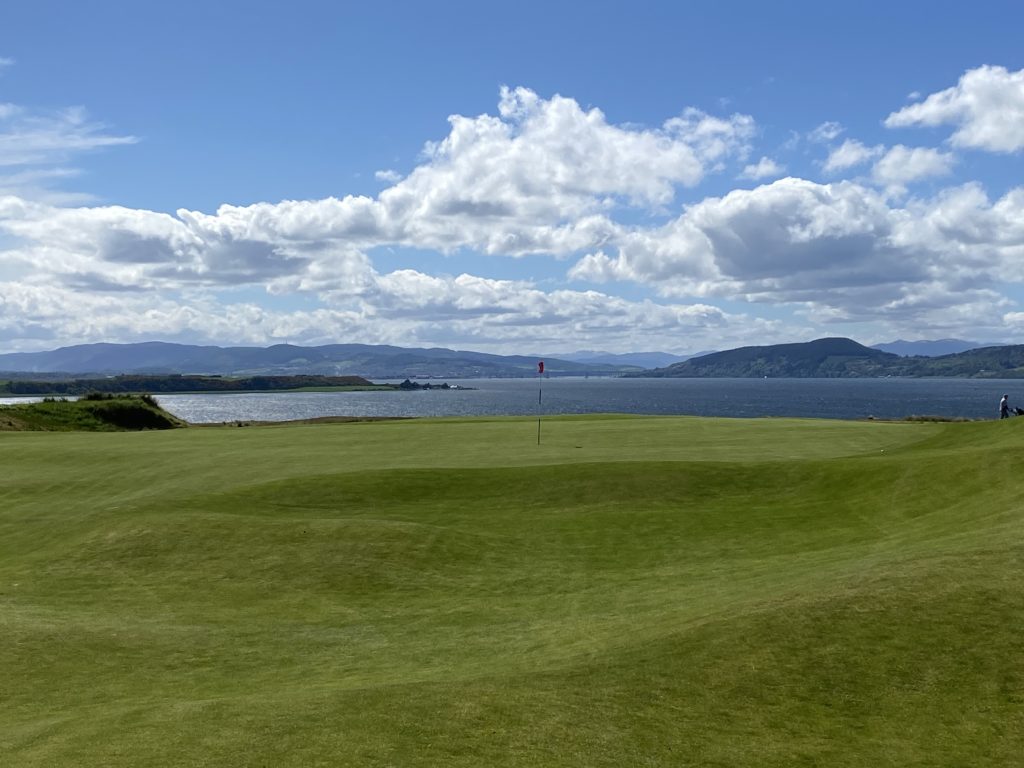 The view up the Moray Firth from the 13th green
The view up the Moray Firth from the 13th green
There is a fairly long uphill walk to the 13th tee, which is a par 4 which doglegs to the right. The approach to the green gives fantastic views beyond, up the Moray Firth to the Kessock Bridge. Don’t be distracted by the view and concentrate on trying to make par.
Holes 14 and 15 are medium-length par 4’s. On these holes, being on the fairway off the tee is the only way to make a straightforward par. Miss the fairways and it’s best to take your medicine and layup. The 16th is a short par 4 which is driveable under the right conditions although bunkers and bushes await the shot that is offline.
The Last Short Hole
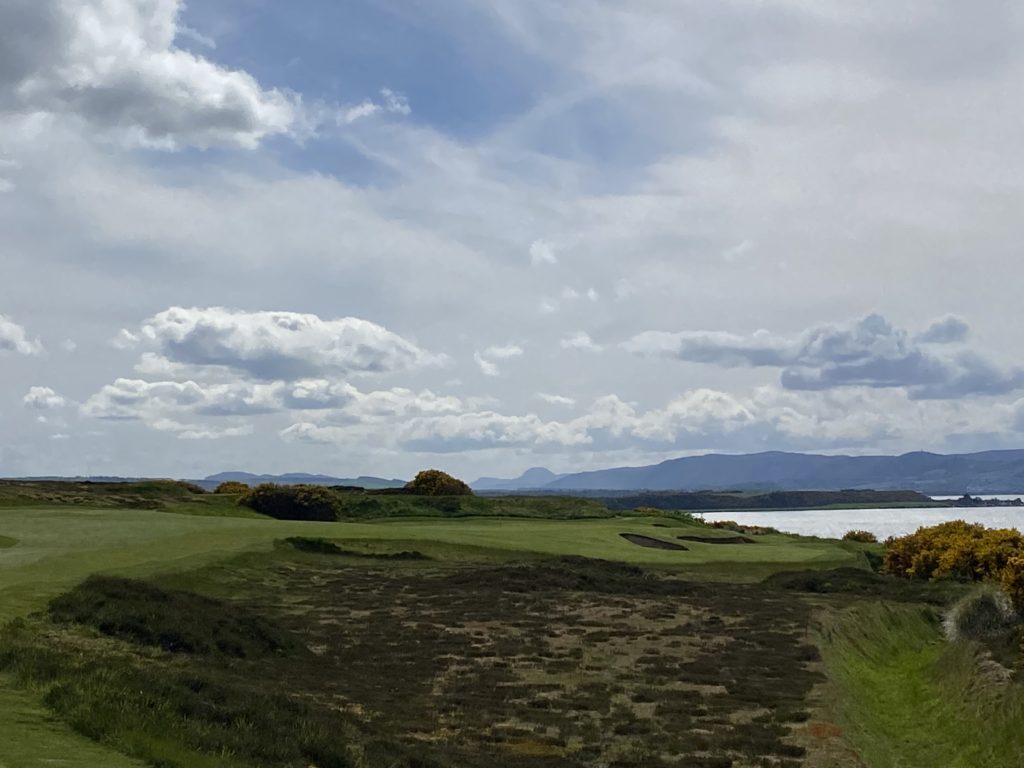 The 17th hole
The 17th hole
The 17th is a strong par 3 at over 200 yards. It was playing directly into the wind and our 3 wood off the tee didn’t reach the green. Favour the left off the tee to avoid the bunkers and trouble on the right side.
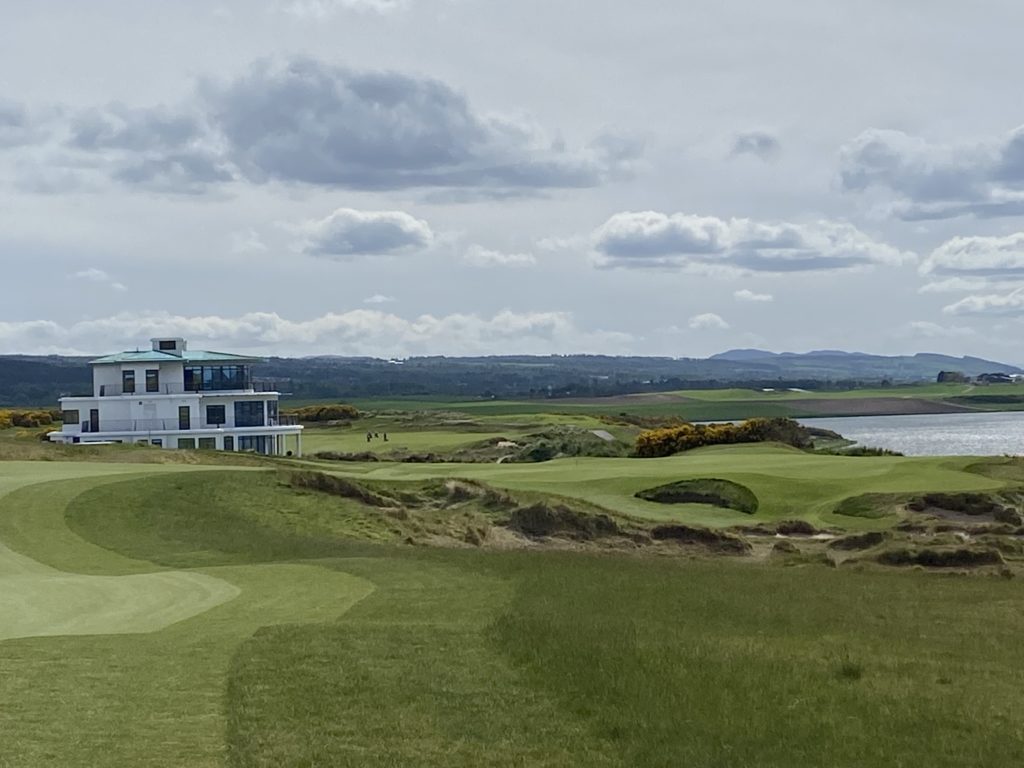 The 18th approach
The 18th approach
The final hole is over 500 yards and plays slightly downhill however it’s not an easy birdie hole. The tee shot is a blind one and the line off the tee is the Scottish Saltire flag, which is left of the clubhouse. The second shot plays downhill and was into the wind. The safe line is to play to the left which leaves a short pitch onto the large undulating green. We went for it and ended up in the bunker to the right and below the green. Four shots later and it was a bad bogey. There is a time and a place to go for the green and this wasn’t one of them!
At a Glance:
- Former European Tour Venue
- Excellent practice facilities
- Knowledgeable and helpful staff
- Comfortable clubhouse with cracking views
- Well-stocked pro shop with plenty of branded golfwear
Summary
Castle Stuart lived up to its reputation and was a wonderful experience. Playing links golf in the wind is exhilarating and challenging. Forget about scoring and just enjoy the shotmaking and the fun of playing low bump and runs across the contours which do their best to throw your shot offline. Playing at Castle Stuart in the wind will guarantee you a red, flushed face, and a round of golf that will live long in your memory.
Thank you to Stuart McColm and his team for looking after us. We loved Castle Stuart and we can’t wait to return.
Our Accommodation
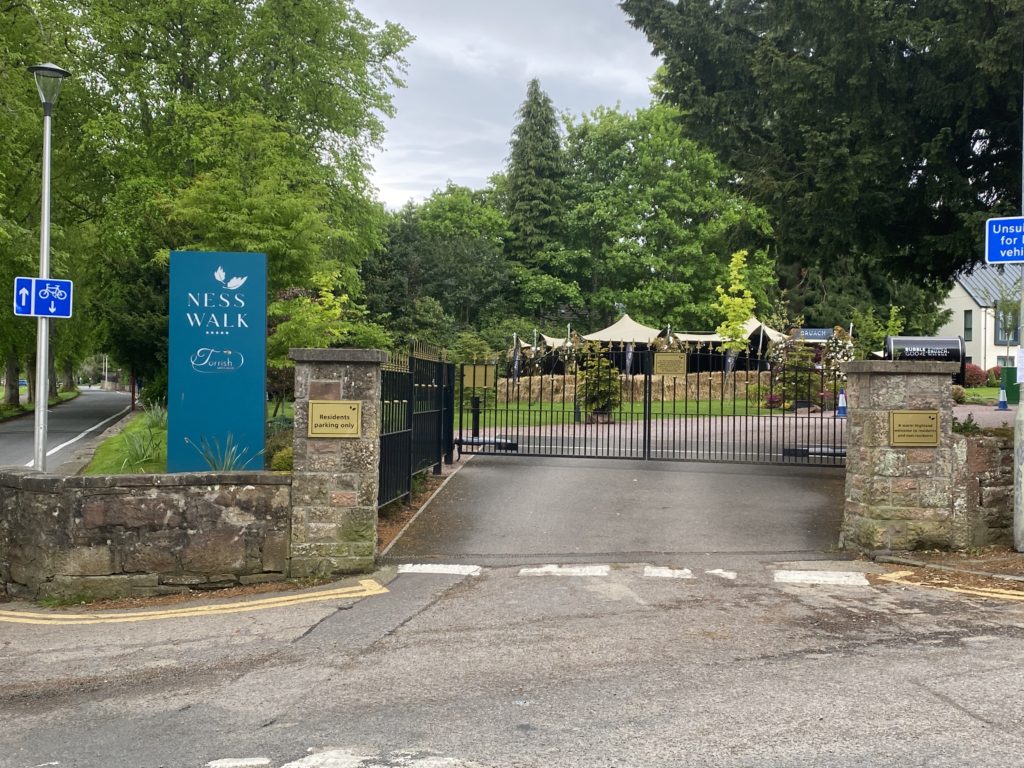 The entrance to Ness Walk
The entrance to Ness Walk
On Castle Stuart’s recommendation, we stayed at Ness Walk, a 5-star small hotel situated on the banks of the River Ness, in the centre of Inverness and only 8 miles from the golf course. We were greeted by the concierge and offered a complimentary glass of bubbly prior to checking in.
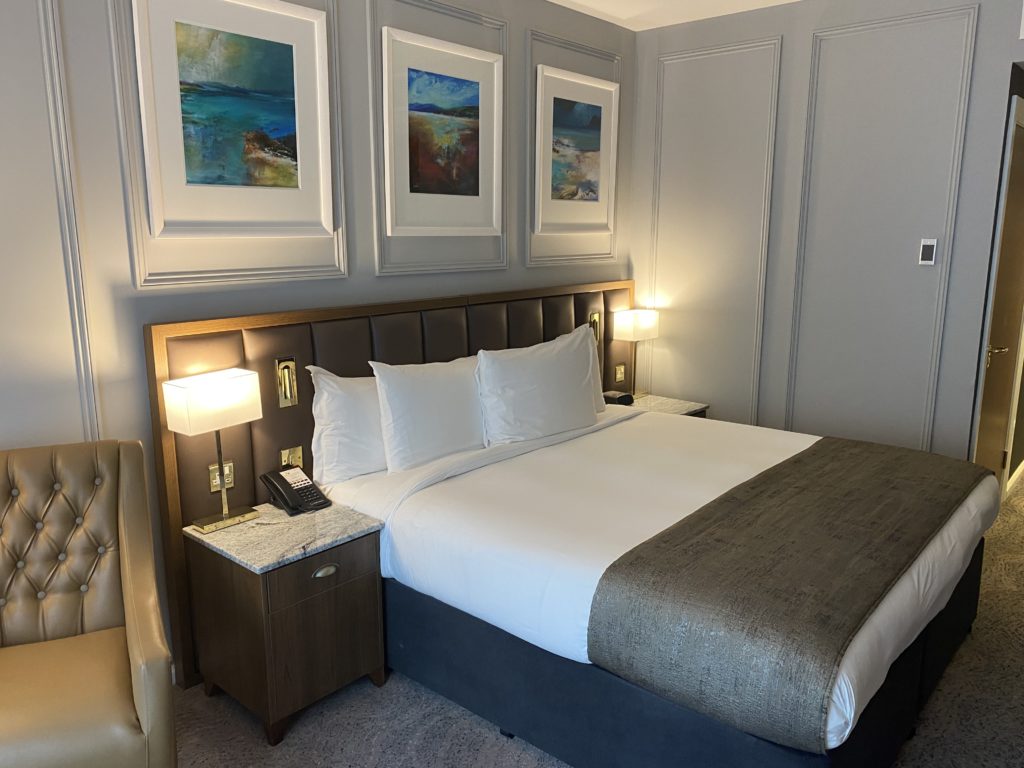 Our room
Our room
Our ensuite bedroom was large and very comfortable and had a seating area and patio doors which led out to the sunny courtyard.
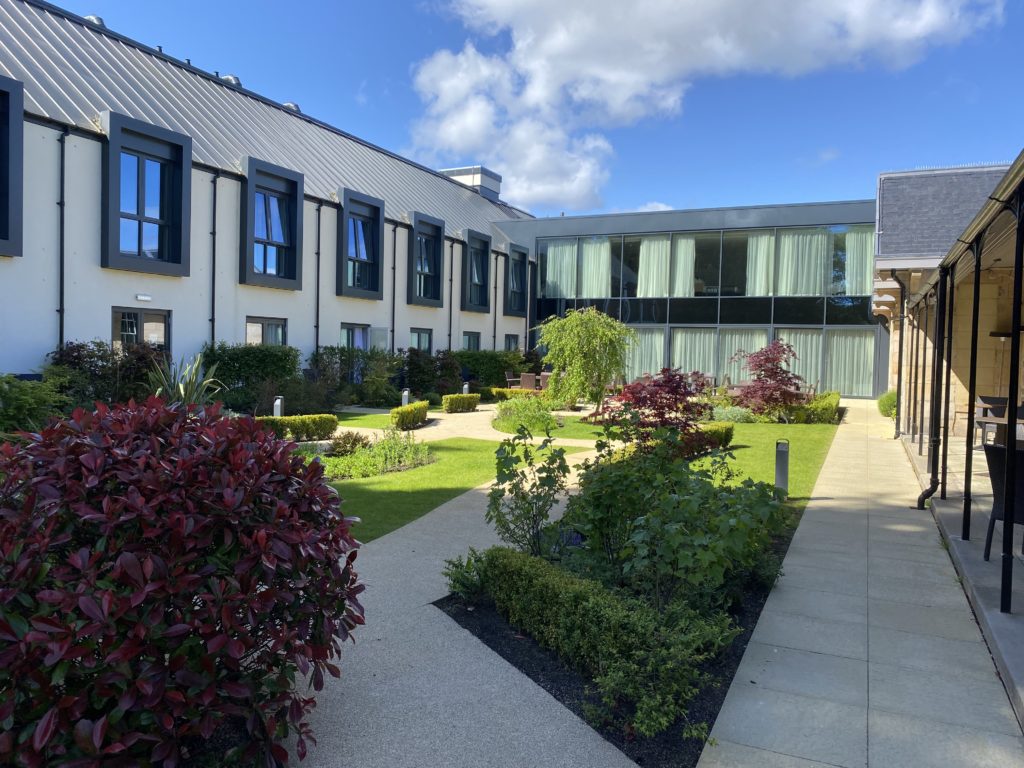 The courtyard.
The courtyard.
Sitting outside in the sunshine with a gin and tonic was the perfect end to a tough day on the course and the ideal way to relax before dinner. We have been fortunate to stay and eat in many nice hotels over the years however Ness Walk goes straight into our top 5 hotels we have visited.
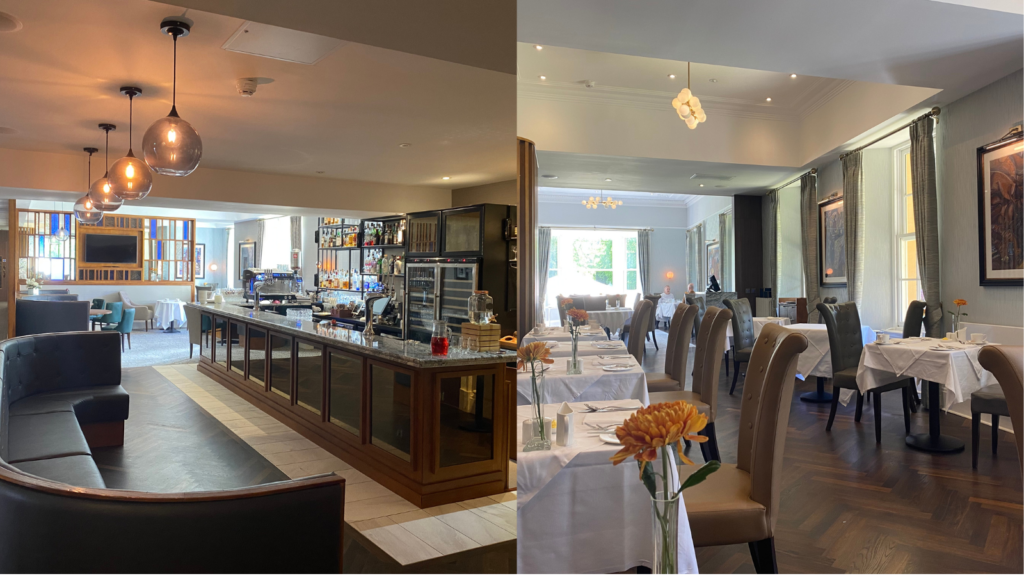 The bar and dining room
The bar and dining room
The dining experience, menu choices and food were all exceptional as was the service from the friendly and knowledgeable staff.
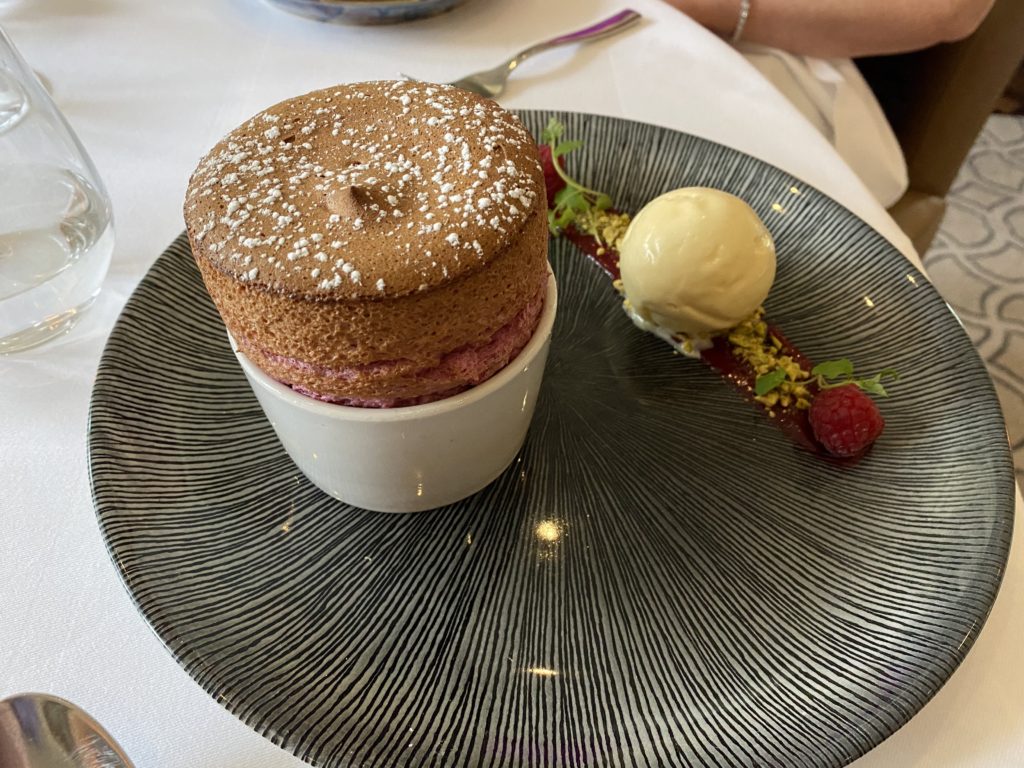 Raspberry Souffle
Raspberry Souffle
Our top tip for dessert, order the raspberry souffle. It is simply sumptuous.
We cannot recommend this hotel highly enough. It was simply outstanding. The staff, the rooms, the food, the location, everything about this hotel oozes class and excellence. It’s stunning and we can’t wait to return. Thank you to Angus Macleod, Marketing Manager at Kingsmills Hotels and to the team at Ness Walk for hosting us.
Next time, we visit the Trump Turnberry Resort to find out if it remains one of the world’s best golf venues.

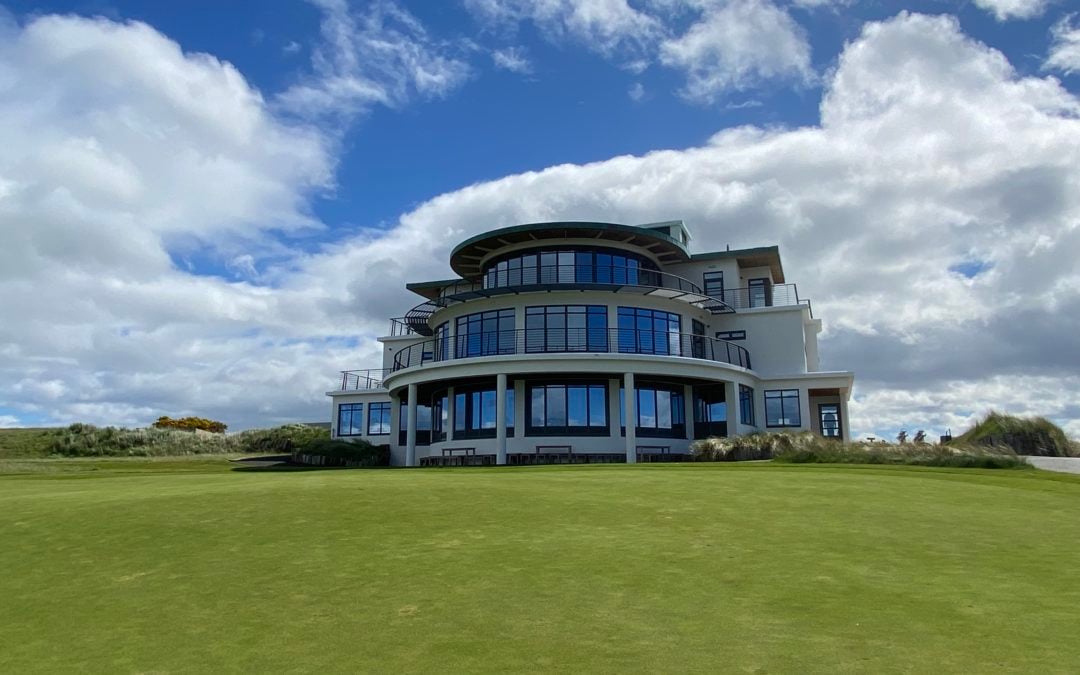

 0
0